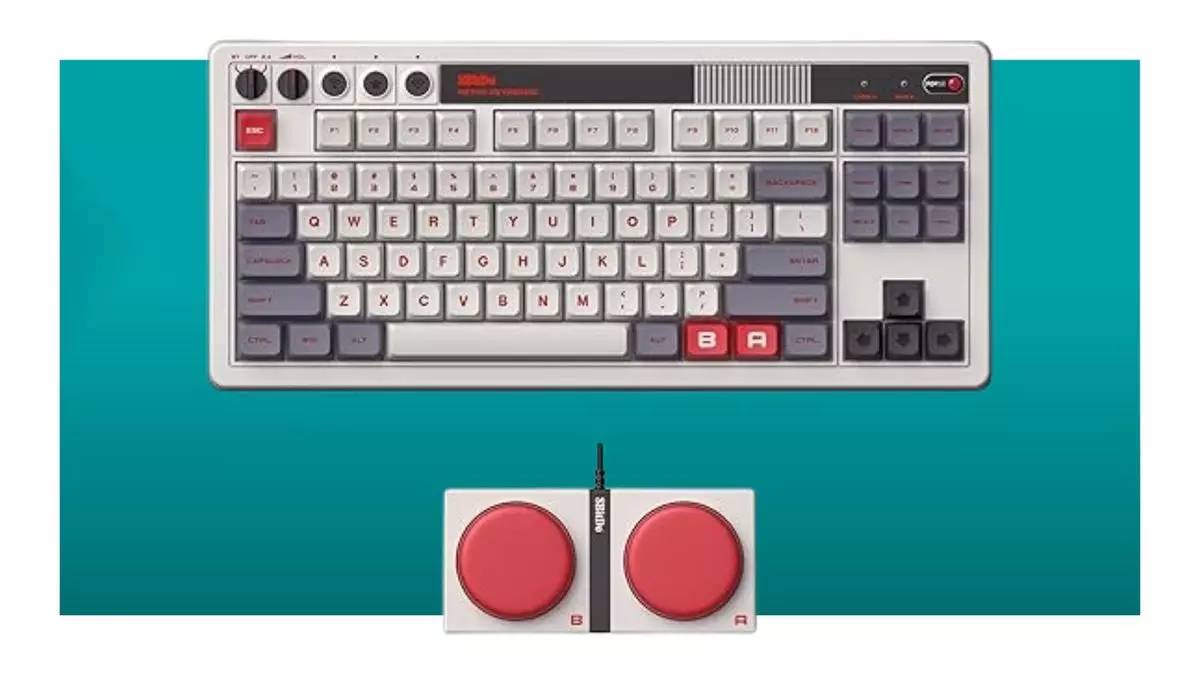The emergence of retro-themed gaming peripherals has taken the tech world by storm, and the C64 version of 8BitDo’s Retro Mechanical Keyboard certainly captures the heart of nostalgia. Blending a classic aesthetic with contemporary features, this keyboard appeals to fans who cherish the charm of vintage gaming consoles. However, despite its inviting look, the product’s pricing may deter potential buyers; a more affordable alternative exists in the NES-themed version, which offers similar functionality at a lower price point.
At $80, the NES-style keyboard presents itself as a budget-friendly choice without sacrificing the design appeal. The clever incorporation of hot-swappable keys makes the keyboard adaptable to various user preferences, allowing for a personalized typing experience without the need to purchase an entirely new keyboard. The ergonomic layout and a compact design lend themselves to prolonged use, catering specifically to avid gamers and typists alike.
Powerful Connectivity Features
The core features of the 8BitDo Retro keyboard elevate its usability. The dual connectivity options—2.4 GHz and Bluetooth—make it versatile for gaming setups or casual environments. Gamers may be concerned about latency, but if you have the patience to adapt, the Bluetooth function allows for a minimal wire setup. Switching between these modes is facilitated through a convenient dial located at the top left corner, enhancing user experience with ease of accessibility.
Adding to its multitude of functions is a volume dial and a striking red ‘Power’ light on the top right. These additional features not only serve a practical purpose but also reinforce the nostalgic essence of the design. It feels as if each element was carefully curated to resonate with those who fondly remember gaming’s earlier days, bridging the gap between past and present.
The Unique Super Buttons
One of the standout characteristics of the 8BitDo Retro is its intriguing ‘Super Buttons,’ which are essentially large, customizable switches. This innovation allows users to tailor their experience, designating different commands or sequences to these hefty red buttons. For example, one can quickly initiate gaming recordings with a simple press, a boon for those who appreciate the rush of capturing epic gameplay moments.
Nevertheless, while the inclusion of these programmable buttons may seem fascinating, they appeal to a niche audience. The accompanying software, although necessary for advanced configurations, can feel restrictive. Users seeking to further expand their customizing options might find themselves at odds with the limitations presented by 8BitDo’s interface. This element can detract from the overall user experience, leaving some users wanting more flexibility.
Practicality Meets Aesthetic Joy
The day-to-day experience of using the C64 version has proved surprisingly rewarding. It’s not just the flashy retro design that makes this keyboard stand out; the tactile feedback of mechanical keys presents an engaging typing experience. The combination of aesthetics and practicality transforms what could have been a gimmicky product into a reliable companion for a range of tasks, from gaming to extended typing sessions.
However, the addition of features, like the ‘Super Stick,’ is notably absent from the NES version. The stick offers joystick functionalities, primarily targeting retro gaming enthusiasts. While this may sound intriguing on paper, it ultimately narrows its appeal, especially if affordability is a major concern. Many users, like myself, might find the aesthetic of the NES more appealing without the extra functionality of four more programmable keys that remain largely unused.
In the grand landscape of gaming peripherals, the 8BitDo Retro Mechanical Keyboard makes a solid case for marrying nostalgia with modern utility. Nevertheless, with two models attracting very different audiences, the decision might not be straightforward. For the budget-conscious gamer who simply adores the aesthetics, the NES-themed keyboard may emerge as the seizing choice, leaving the C64 model as more of a conceptual showcase than a necessity in daily use.


Leave a Reply